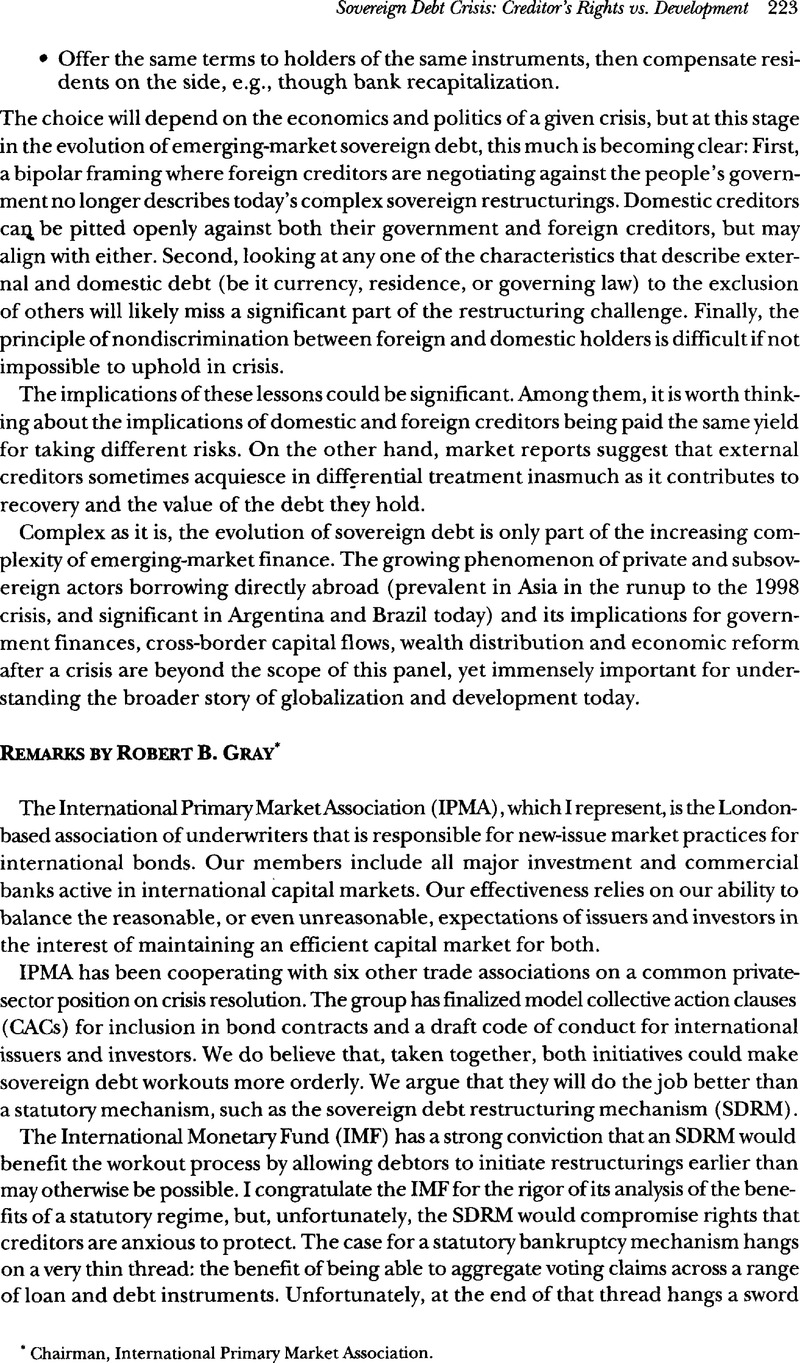Published online by Cambridge University Press: 28 February 2017

1 The G-10 (Group of Ten) refers to a group of eleven developed countries that have agreed to participate in the General’s Arrangements to Borrow. The Bis, European Commission, IMF, and OECD are also official observers of the activities of the G-10.
2 Rule 144A bonds are securities which, in accordance with General Rules and Regulations promulgated under the Securities Act of 1933, may only be reoffered to qualified institutional buyers, as a result of which they enjoy exemption from the broader information requirements applicable to securities offered to the public.
3 In June 2000 Elliott Associates obtained ajudgment against Peru for $56 million with respect to defaulted commercial loans that had been guaranteed by Peru. Subsequently Elliott Associates successfully obtained an order in the Brussels court restraining Euroclear from accepting or paying out cash from Peru to pay interest due on certain Brady bonds. Peru decided to settle with Elliott Associates in order to avoid default on the Brady bond payments.
4 Buchheit, Lee, The Collective Representation Clause, Int’l Fin. L. Rev. 10 (Sept. 1998)Google Scholar.